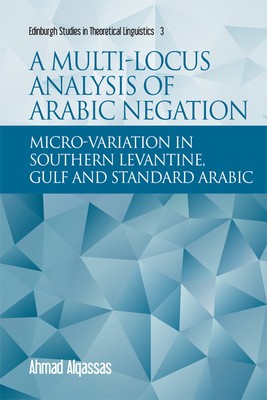
- We will send in 10–14 business days.
- Author: Ahmad Alqassas
- Publisher: Edinburgh University Press
- ISBN-10: 1474433146
- ISBN-13: 9781474433143
- Format: 15.8 x 23.9 x 1.8 cm, hardcover
- Language: English
- SAVE -10% with code: EXTRA
Reviews
Description
Standard Arabic data from a corpus study of negation in the Quran (around 86 thousand words) and Levantine literature (around 86 thousand words). Dialectal data from a Southern Levantine dialect (Jordanian Houran) and a Gulf Arabic dialect (Qatari) shedding light on word order contrasts in negative clauses. New data challenging the standard claim in the Arabic linguistics literature that negation has a fixed position in the clause structure. New data challenging the binary parametric view of cross-linguistic negation studies and supporting a multi-locus analysisThis book studies the micro-variation in the syntax of negation of Southern Levantine, Gulf and Standard Arabic. By including new and recently published data that support key issues for the syntax of negation, the book challenges the standard parametric view that negation has a fixed parametrized position in syntactic structure. It particularly argues for a multi-locus analysis with syntactic, semantic, morphosyntactic and
diachronic implicat
EXTRA 10 % discount with code: EXTRA
The promotion ends in 4d.09:30:05
The discount code is valid when purchasing from 10 €. Discounts do not stack.
- Author: Ahmad Alqassas
- Publisher: Edinburgh University Press
- ISBN-10: 1474433146
- ISBN-13: 9781474433143
- Format: 15.8 x 23.9 x 1.8 cm, hardcover
- Language: English English
Standard Arabic data from a corpus study of negation in the Quran (around 86 thousand words) and Levantine literature (around 86 thousand words). Dialectal data from a Southern Levantine dialect (Jordanian Houran) and a Gulf Arabic dialect (Qatari) shedding light on word order contrasts in negative clauses. New data challenging the standard claim in the Arabic linguistics literature that negation has a fixed position in the clause structure. New data challenging the binary parametric view of cross-linguistic negation studies and supporting a multi-locus analysisThis book studies the micro-variation in the syntax of negation of Southern Levantine, Gulf and Standard Arabic. By including new and recently published data that support key issues for the syntax of negation, the book challenges the standard parametric view that negation has a fixed parametrized position in syntactic structure. It particularly argues for a multi-locus analysis with syntactic, semantic, morphosyntactic and
diachronic implicat


Reviews